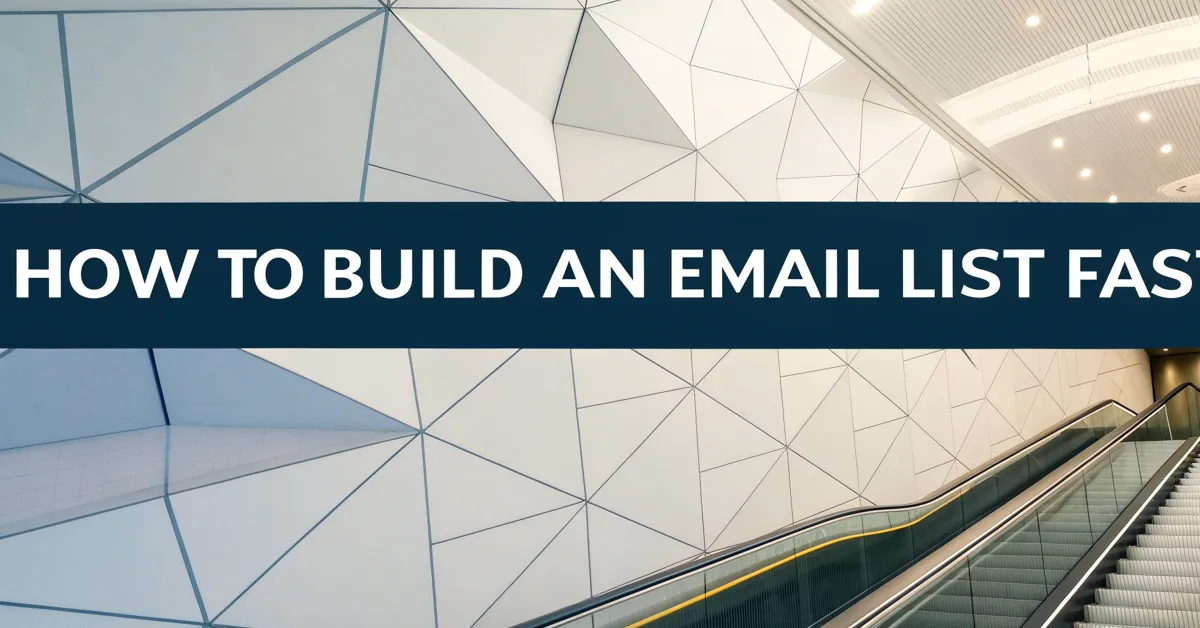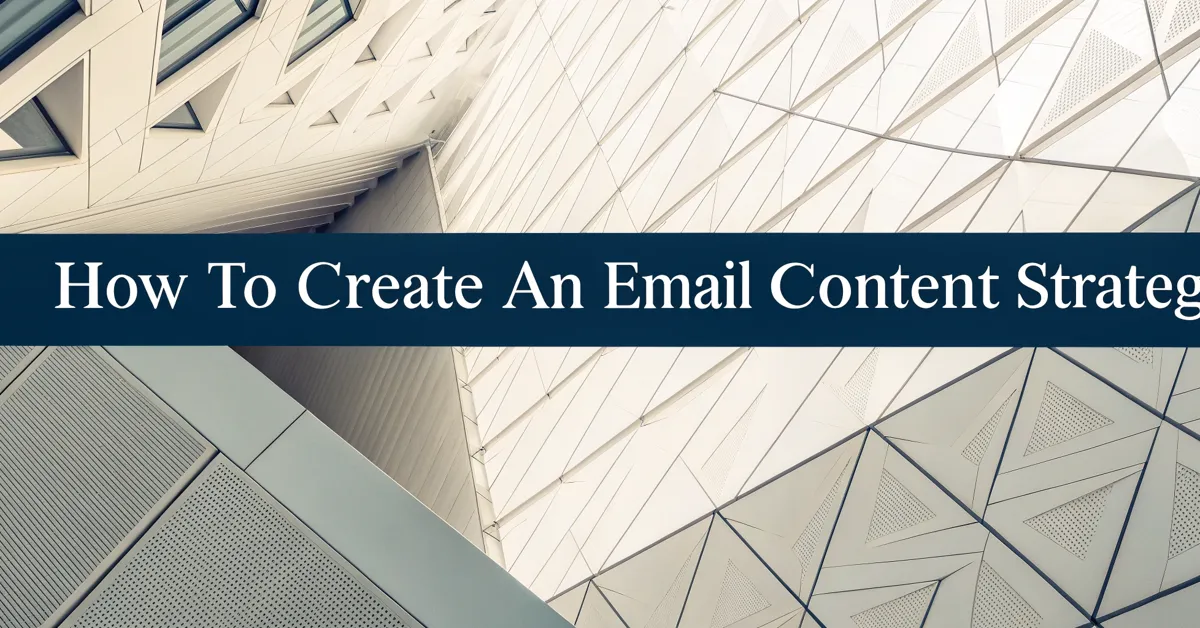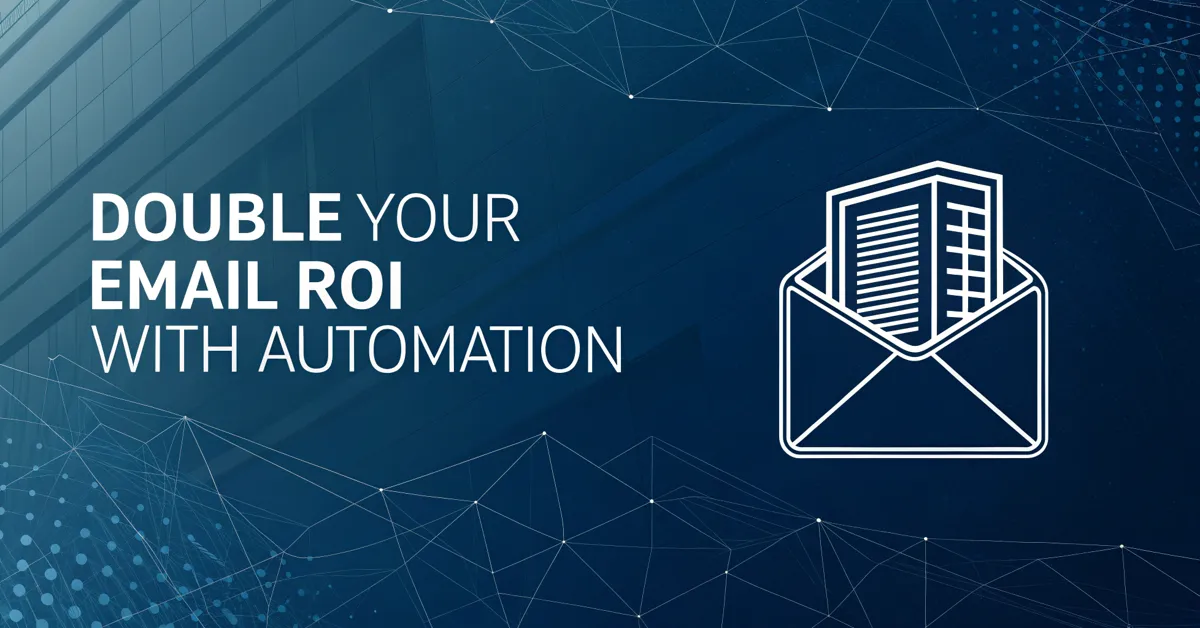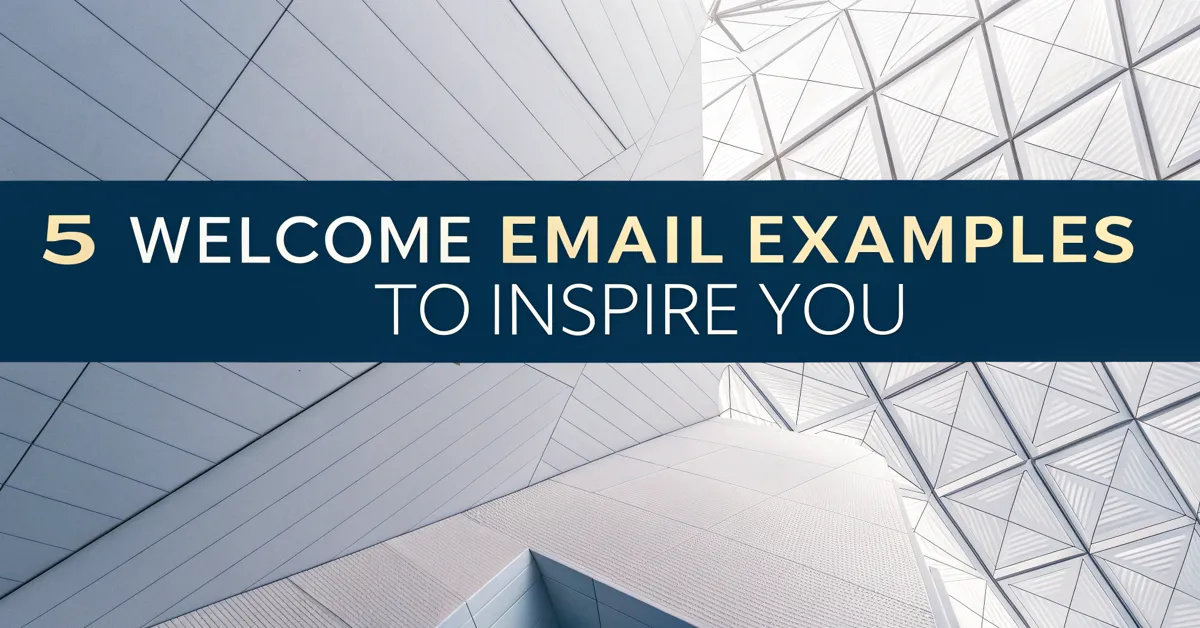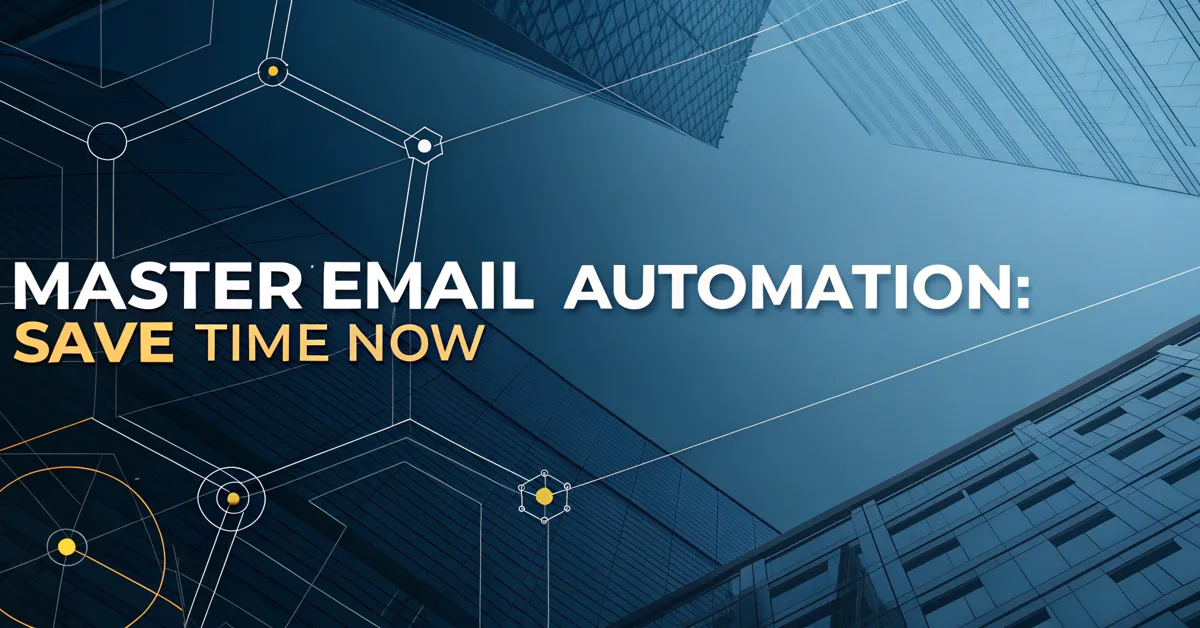It’s tough to start from zero. You pour your heart and soul into a business, a brand, or a project, and now you need people to see it. To hear about it. One of the most powerful ways to build that kind of engaged audience is through email marketing. Yet, to send an email, you need an email list. This task can feel overwhelming when you’re just starting out. But there are simple methods to grow your subscriber base that don’t require you to spend a lot of money.
This article will walk you through a number of proven steps to help you build your email list fast, effectively, and ethically. We’ll discuss various strategies you can use right away, and also highlight the main pitfalls to avoid on your path. This is a step-by-step guide, so you can build your email list and connect with your audience with clarity and confidence.
Why an Email List is Key for Your Business
Before we dive into the how, let’s make sure we’re on the same page regarding why an email list matters. In a world full of social media platforms, it can be easy to forget that email remains a powerful channel to connect with people.
Here’s why building an email list is essential:
- Direct access to your audience: Unlike social media platforms, where your posts can get lost in the feed, email allows you to connect directly with your subscribers. This means you control the communication and your messages are less likely to be overlooked.
- Build relationships: Email marketing lets you have real, one-on-one chats with your audience. It is more intimate than social media. You can share updates, insights, and offers that appeal to them. This makes a genuine relationship and encourages loyalty.
- High conversion rates: People who sign up for your email list are already interested in what you have to offer. This makes them more likely to buy from you. Email marketing tends to have high conversion rates compared to other marketing channels.
- Full control: Email is a marketing channel you own, unlike social media platforms that can change algorithms or even shut down. You have full control over your email list, which makes it a more stable marketing asset.
- Cost-effective: Email marketing is far more cost effective than many other options. Once you have your email list in place, you can contact lots of people with just a few clicks, without paying for each interaction.
- Detailed insights: You can collect lots of information about your audience. For example, where they click and which emails get more views. These stats help you improve your marketing and get better results.
When you create an email list, you’re making a direct and dependable way to reach your audience and grow your business.
Proven Methods to Build Your Email List Quickly
Now you know why an email list is important, let’s go through the different ways to build one quickly:
1. Use Opt-in Forms on Your Website
One of the most basic and effective ways to build your email list is by placing opt-in forms on your website. These forms invite people to subscribe to your email list and become a part of your community.
Here are some key places to include opt-in forms:
- Homepage: Your homepage is often the first page visitors will land on. That’s why an opt-in form there can quickly grab their attention. It needs to be easy to spot. Keep it above the fold (visible without needing to scroll).
- Blog Posts: When someone reads a blog post, they’re already interested in the topic, so this is a great time to ask them to subscribe for more. Add a form at the end of each post. Or even within the content (as a content upgrade).
- About Page: People go to your About page to learn about you. It’s a good place to invite people to connect with you beyond the usual website stuff.
- Contact Page: Someone who goes to your Contact page may want to stay in touch. So, put an opt-in form on that page as well.
- Sidebars: If you have a sidebar on your website, this is another good spot to display an opt-in form. They are always visible as people browse your site.
- Pop-ups: These forms can be very useful if done right. Make sure they show up at the right time. Don’t make them pop up as soon as the user lands on your page, as this will be too disruptive. Instead, time it for when someone has been on the page for a while. Or when they’re about to leave the site.
Here are some useful tips for better opt-in forms:
- Keep it simple: Ask only for what you really need. Usually, that’s just an email address. The less data you ask for, the more likely people are to subscribe.
- Write great copy: Explain the value users will get by signing up. Don’t just write “Subscribe to our email list.” Tell them what’s in it for them (exclusive deals, cool content, etc.).
- Use a clear call to action (CTA): Make sure your CTA is obvious. Use words like “Subscribe Now,” “Join Our Community,” or “Get Exclusive Access.”
- Offer incentives: People are more likely to share their email address if they get something in return. Offer a free e-book, checklist, discount code, or other valuable content.
- Make it easy to find: Your opt-in form must be visible on your website. Do not make people look for it.
- Test your forms: Try different opt-in form designs and placements on your site. Test to see what gets the most sign-ups.
2. Offer Lead Magnets
Lead magnets (also called opt-in freebies) are free offers you give to people in exchange for their email address. They are one of the most effective ways to grow your email list.
Here are some types of lead magnets you could create:
- E-books: A detailed guide or e-book can show your expertise and provide lots of value to your audience.
- Checklists: A checklist can help people take action. These are often quick to read and super practical, so they are really useful for your audience.
- Cheat sheets: These offer key info in a simple format, and can be a great way to give people what they need quickly.
- Templates: Providing a template that makes it easier for people to take action can be a big draw.
- Webinars: Offer a free webinar on an interesting topic. This shows you’re an expert and lets you connect with your audience in a live format.
- Free courses: A mini-course that has lots of details can be really valuable for people who want to learn something in depth.
- Resource libraries: If you have lots of different tools or resources, collect them in a library, and let users sign up to get them.
- Case studies: Share case studies that display how you have helped clients in the past. This also shows your expertise and builds trust.
- Discounts or Coupons: Offer a discount or coupon code for new subscribers. This is a classic move that works really well to get new people on your email list.
Here are some key things to keep in mind when you design lead magnets:
- Relevance: Your lead magnet must be super helpful for your target audience. Make sure it connects to their problems and what they’re interested in.
- Value: Your lead magnet should be of high value. If you are asking someone to share their personal contact information, make it worth their time.
- Actionable: The lead magnet should be easy for your audience to use. Make it practical, so they can get the result they want quickly.
- High Quality: Your lead magnet should be of good quality. People will see it as a reflection of your business. So make sure the lead magnet is of good quality.
3. Use Content Upgrades
Content upgrades are specific lead magnets that relate to a particular piece of content. Instead of just providing a general freebie for signing up, you’re offering something more tailored to their interests.
For instance, if you write a blog post about “email marketing strategies,” you could offer a free checklist on “how to craft high converting emails.”
Here’s why content upgrades work so well:
- Increased relevance: Because the upgrade is tied to the content people are already reading, they’re more likely to want it.
- Higher conversion rates: Content upgrades show an offer to a highly engaged audience. It also tends to result in a high conversion rate.
- More targeted email list: You can get more detail about the user by knowing what content upgrades they go for. This means you can segment your list and send more targeted emails in the future.
Here are some types of content upgrades you could use:
- Checklists: For any posts with a list, a handy checklist can make it easy for readers to put it into action.
- Templates: Give templates that relate to the post. A template makes it easy to put into practice what you’re trying to teach.
- Resource Guides: If you’ve mentioned many tools or sources in your post, make a guide to them that your readers can refer to later.
- Bonus Content: This could be a longer version of your post, or any other special content that is not available in the article.
- Downloadable PDF: Give a printable version of your post for people who want to take it on the go or keep it forever.
Here’s how you can set up content upgrades:
- Choose popular posts: Look at your site analytics to see which posts are getting lots of traffic. That is where you should start.
- Match your upgrade to the content: The upgrade should fit in perfectly with the main points of the content.
- Highlight the upgrade within the post: Make sure your offer is clear and noticeable in the content. You can add buttons or in-line text to get people to notice the content upgrade.
- Test and refine: Keep testing the placement of your content upgrades. See which gets the most subscribers.
4. Run Contests and Giveaways
Contests and giveaways are great ways to get lots of people interested in your brand fast.
Here’s how contests and giveaways can help you build your email list:
- Viral reach: People are much more likely to share contests and giveaways with others. This makes it easier to reach lots of new people quickly.
- Increased engagement: Contests get people to interact with your brand, making them more invested in what you do.
- Data collection: Contests can help you collect email addresses from people. This data will be useful for sending emails to them in the future.
Here are some types of contests and giveaways you could run:
- Product giveaways: Give away one of your products to those who enter. This makes people keen to try out your products.
- Gift cards: A gift card to your store is always a good idea, because it brings in more business.
- Cash prizes: Cash prizes are a popular choice, because everyone likes free cash.
- Experiences: Offer an experience that is related to your business. For example, a special spa day or a meal at a restaurant.
When planning a contest or a giveaway, follow these steps:
- Set a clear goal: What do you want to get out of the contest? Your goal is likely to be growing your email list. Always have a primary goal.
- Pick a prize that relates to your audience: The more relevant the prize is to your niche, the more effective the contest will be at reaching your target audience.
- Set clear rules: Make the contest rules clear. Make sure it is easy for everyone to know how to join.
- Promote your contest: Use social media, emails, and even ads to let people know about your contest.
- Use a contest platform: A good contest platform will make it easy to manage your contest.
5. Use Social Media Platforms
Social media is a great place to let people know about your email list. You can use different social media sites to get people to subscribe.
Here are some ways to do it:
- Bio links: Add a link to your email signup page in your social media profiles. Many social media sites only let you have one link. You can use a service like Linktree to give multiple links.
- Regular posts: Publish regular content that prompts people to sign up for your email list. Make it clear what they will gain when signing up.
- Stories: Post content on your social media stories to get people to sign up. They are a great way to bring your audience to a signup form.
- Run ads: You can run ads on different social media platforms and promote your email list. Use targeted ads to reach the right people for your brand.
- Social media groups: If you are part of any groups that are related to your industry, you can promote your signup page there.
- Collaborations: Join with other brands to promote your email list to each other’s audience. This is a great way to reach new potential subscribers.
Here are some ways to optimize your social media for email list growth:
- Use clear calls to action: Always make sure that you are telling people what they should do. “Sign up to our email list” is a good way to start.
- Make your links easy to access: Use link shortening tools like bit.ly to make your links easy to remember.
- Use visually appealing content: Images and videos always get more views than plain text. Make sure your content is attractive.
- Engage with your audience: Connect with your followers. Always reply to comments and questions, to increase the bond with your brand.
- Be consistent: Share posts and stories at regular intervals. This will help to keep your brand top of mind.
6. Host Webinars and Online Workshops
Webinars and online workshops are another great way to build your email list quickly. This also helps you connect with your audience in a real, personal way.
Here’s how to get new subscribers with webinars and online workshops:
- Provide value: Make sure your webinar or workshop gives real value. If you teach them something useful, they will be more keen to connect.
- Targeted topics: The more targeted your topic is, the more likely you will reach an audience who wants to join your list.
- Promote your webinar/workshop: Always make sure you have a great promotional plan. You should promote your event across your site, social media, and emails.
- Make the sign-up process simple: Make it easy for people to register. Don’t ask too much information. Usually, email and name is enough.
- Replay: Give access to a replay of your webinar, as a way of thanking people who signed up. You can also use the replay as a lead magnet.
Here are some tips for running a great webinar:
- Choose a topic that is relevant to your audience: Your audience will want to learn more about what they want to know. Always choose topics that they have an interest in.
- Create a high-quality presentation: Make sure your presentation is easy to understand, looks good, and is engaging.
- Promote your webinar in advance: Make sure you let everyone know about your webinar. Promote it everywhere.
- Interact with your audience: Keep an eye on the chat and answer any questions that come up. Engage your audience.
- Follow up with attendees: Always send a thank you email to all of your attendees. Follow up with a recording of the webinar, and ask them to join your email list.
7. Use Offline Marketing
It can be easy to forget that you don’t always have to be online. Offline marketing can be a great way to build your email list.
Here are some tactics you can use to get more emails offline:
- Networking events: When you meet people at events, ask if they want to sign up for your email list. You can bring a signup sheet.
- Business cards: Put a QR code on your business cards that directs to your signup page.
- Workshops and talks: When you give presentations, invite people to join your list.
- Conferences: If you have a stall at a conference, promote your list. Have a tablet where people can sign up, or have a signup form on display.
- Physical stores: If you have a brick and mortar store, use a sign-up sheet or tablet to let people subscribe.
Here are some tips for building an email list offline:
- Make it easy to sign up: Use QR codes or have a sign-up sheet handy.
- Offer value: Make sure you offer an incentive for signing up, like a discount code, a free product, or even an e-book.
- Be clear: Make it very obvious what people should do, and make it very clear what value they will gain by signing up.
8. Collaborate With Other Businesses
Working with other businesses can help you reach new audiences. You’re tapping into people who may have never heard about your brand before.
Here are some ideas to build your list with collaborations:
- Guest blog: Write a blog post for a site in a similar niche. You should always add a link to your email sign-up page in your writer’s bio.
- Joint webinars: Host a webinar with another business or expert. Both businesses can promote it to their audiences and get new subscribers.
- Cross promotions: Promote each other’s email lists and content on social media and email.
- Giveaways and contests: Join together with another business to run a contest or giveaway.
- Joint lead magnets: Create a resource with another business and share it. This allows you both to get more subscribers.
Here are some tips for collaborating with other businesses:
- Choose the right partners: Team up with brands that are similar to yours, with the same audience.
- Offer mutual benefit: Make sure you all get a fair benefit. No one wants to collaborate if it only benefits the other brand.
- Plan your promotions: Set out a solid strategy for how you will work together. This helps to make sure your collaboration is successful.
- Track your results: Always check your data, to see how the collaboration helped you to meet your goals.
9. Use Exit-Intent Pop-Ups
Exit-intent pop-ups are special types of pop-ups that show up only when someone is about to leave your site. They can catch people’s attention at the very last minute and turn them into subscribers.
Here’s why exit-intent pop-ups are so powerful:
- Last chance: It’s your last chance to make them join your list, before they leave your site.
- Non-intrusive: These pop-ups don’t appear when a user is reading your content. They only show up when it looks like they’re about to leave.
- High conversion rates: Because they’re shown at a critical moment, they often result in high signup rates.
Here are some key tips for using exit-intent pop-ups:
- Offer a compelling incentive: Give a great reason for them to stick around, like a discount, or a freebie.
- Clear call to action: Make it clear what they need to do and what value they’ll get.
- Keep it simple: Don’t ask for too much information, or make the form too long.
- Test and adjust: Try different designs and text to see what works best.
10. Make It Easy to Unsubscribe
While it may seem counterintuitive, it’s important to make it very simple for people to unsubscribe from your email list. When you make it hard to unsubscribe, people may just mark your email as spam. This can hurt your sender reputation.
Here’s why making it easy to unsubscribe is important:
- Keeps your list clean: Having people unsubscribe, rather than mark your email as spam helps to keep your email list clean.
- Better sender reputation: When people mark your emails as spam, it can reduce the chances of your emails ending up in the inbox. It also makes it more likely that your emails will end up in spam.
- Compliance: Many countries and regions have laws that say you must make it easy to unsubscribe from your email list.
Here are some tips to make sure unsubscribing is easy:
- Include an unsubscribe link: All of your emails must have an unsubscribe link.
- Make the link easy to find: The link needs to be easy to find. Usually, it’s best practice to put it at the bottom of your email.
- One-click unsubscription: Make it simple to unsubscribe with just a single click.
- Process unsubscribes quickly: Make sure you act on any unsubscribe request right away.
- Avoid hidden links: Always make the unsubscribe link visible in the email.
Key Things to Avoid When Building Your Email List
As you implement these strategies, it’s important to be aware of some common pitfalls. Here are a few things to avoid:
1. Buying Email Lists
It can seem tempting to purchase email lists from other companies. However, this is a bad idea. Here’s why:
- Low quality subscribers: People on these lists did not give you permission to contact them. This usually means they are not really interested in your business.
- Damaged sender reputation: When you send emails to people who have not asked for them, they are much more likely to mark your email as spam. This hurts your sender reputation and lowers the chances of your emails getting to the inbox.
- Legal issues: Sending emails to people who did not give you permission to contact them can break local and international laws.
- Poor results: Purchased lists rarely produce great results. Email lists are not a numbers game. They are a relationship game.
- Ethical concerns: Buying email lists is not ethical. You need to get people to subscribe willingly.
2. Using Pre-Checked Opt-In Boxes
Pre-checked opt-in boxes make it easy for people to subscribe by mistake. When you have the opt-in box pre-checked, it’s not really consent. Always make sure the user is the one who checks the box.
Here’s why you shouldn’t use pre-checked boxes:
- Unengaged subscribers: If they did not sign up, they’re less likely to engage with your emails.
- Compliance issues: Pre-checked boxes are not seen as valid consent in many locations and countries.
- Lower quality list: An email list that uses pre-checked boxes will always have less quality.
3. Not Being Clear About What You Offer
When someone signs up for your email list, they want to know what they are signing up for. When you’re not clear about what they get from the list, people will be less likely to join.
Here’s why being clear is so important:
- Higher quality subscribers: You get subscribers who really want your emails. This means they are more likely to engage with your messages.
- More engagement: When people know what to expect, they will read your emails more often.
- Lower unsubscribe rate: Clear, detailed expectations can help to keep people on your list, instead of unsubscribing because you sent something that wasn’t of interest.
4. Spamming Your Subscribers
It can be tempting to send many emails often. However, when you email your subscribers too much, they will likely unsubscribe, or worse, mark your emails as spam.
Here’s how to avoid spamming your email list:
- Ask for the email frequency: Right from the sign-up form, you should ask people about how many emails they would like to receive from you.
- Follow a schedule: Have a plan for the emails you send.
- Send high-quality content: When you send good emails, people will always want to open them.
- Segment your list: Use email segmentation to send emails that are tailored to certain subscribers.
- Test and analyze: Always look at your data. See which emails get the most interaction, and reduce the emails that don’t work.
5. Forgetting About Mobile Users
Most people check their emails on their mobile phones. If your email sign-up pages and forms don’t look good on mobile, you’ll lose out on new subscribers.
Here’s how to optimize for mobile:
- Responsive design: Make sure your forms and pages work well on mobile.
- Mobile-friendly forms: Test your forms to make sure they are easy to fill out on a mobile phone.
- Fast loading: Make sure your mobile site loads quickly.
- Easy to read: Make sure your fonts are easy to read on small screens.
6. Ignoring Email Compliance Laws
There are laws about email marketing in many parts of the world. The most important of these is GDPR (General Data Protection Regulation), which is for EU citizens. In the US, we have CAN-SPAM.
Here are a few things you need to know about compliance:
- Get consent: Make sure you get clear consent to add people to your email list.
- Give a way to unsubscribe: All emails must have a simple way to unsubscribe.
- Be clear about who you are: Always make sure you make it clear who you are and what your business is about.
- Do not use misleading info: Don’t make your email subject line or emails sound like they’re from someone else, and do not use false information.
- Store data safely: You have a duty to protect the personal data that you collect.
Building Your Email List: A Final Thought
Building a great email list takes time and dedication. But when done right, it becomes your most valued asset. When you use the right methods, while following ethical best practices, you create a powerful way to connect with your audience.
Don’t be put off if it takes time to see results. Every step you take, every subscriber you add is a step closer to building a loyal and engaged community. In time, you’ll see that effort pay off as your email list becomes a key part of your business success.
